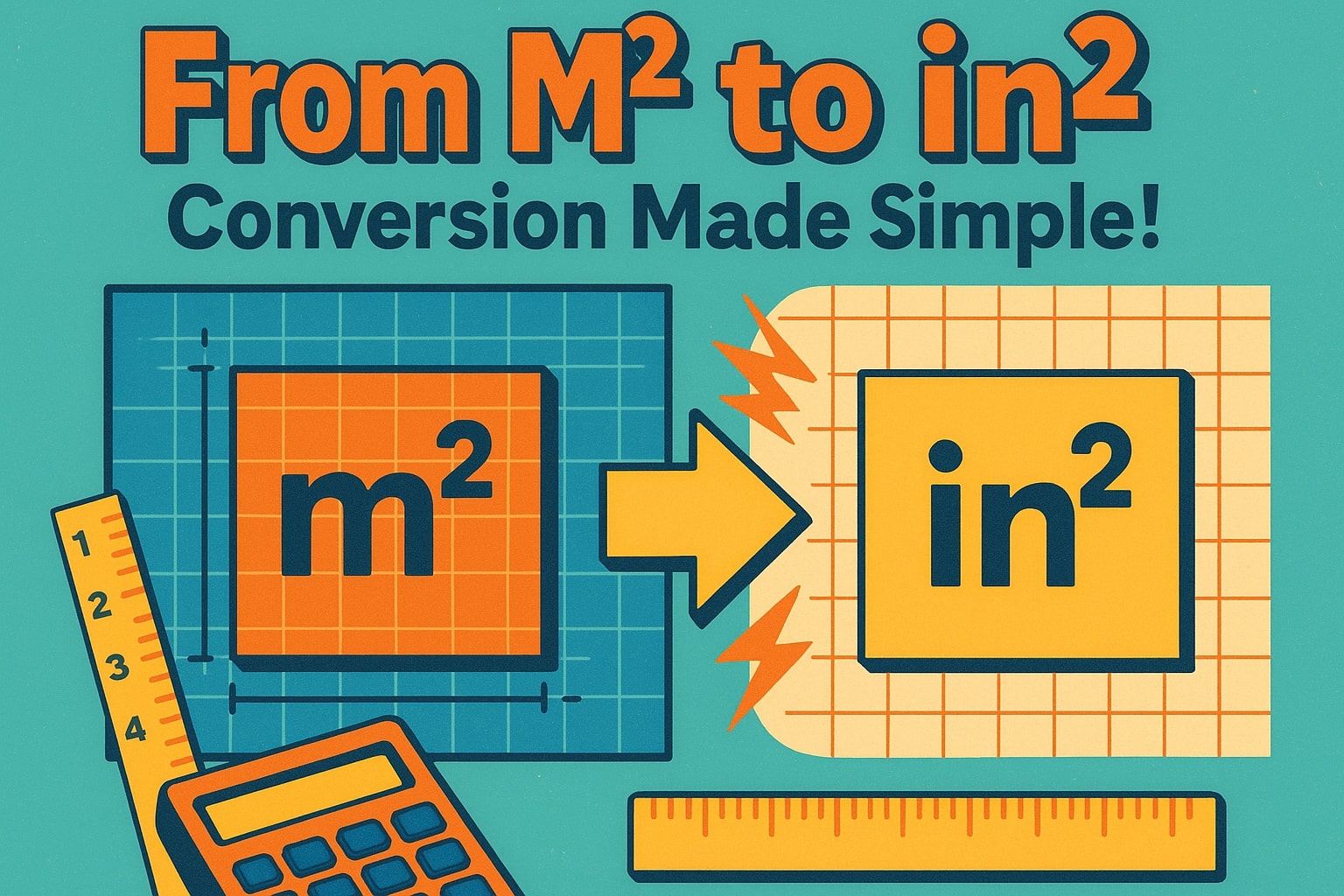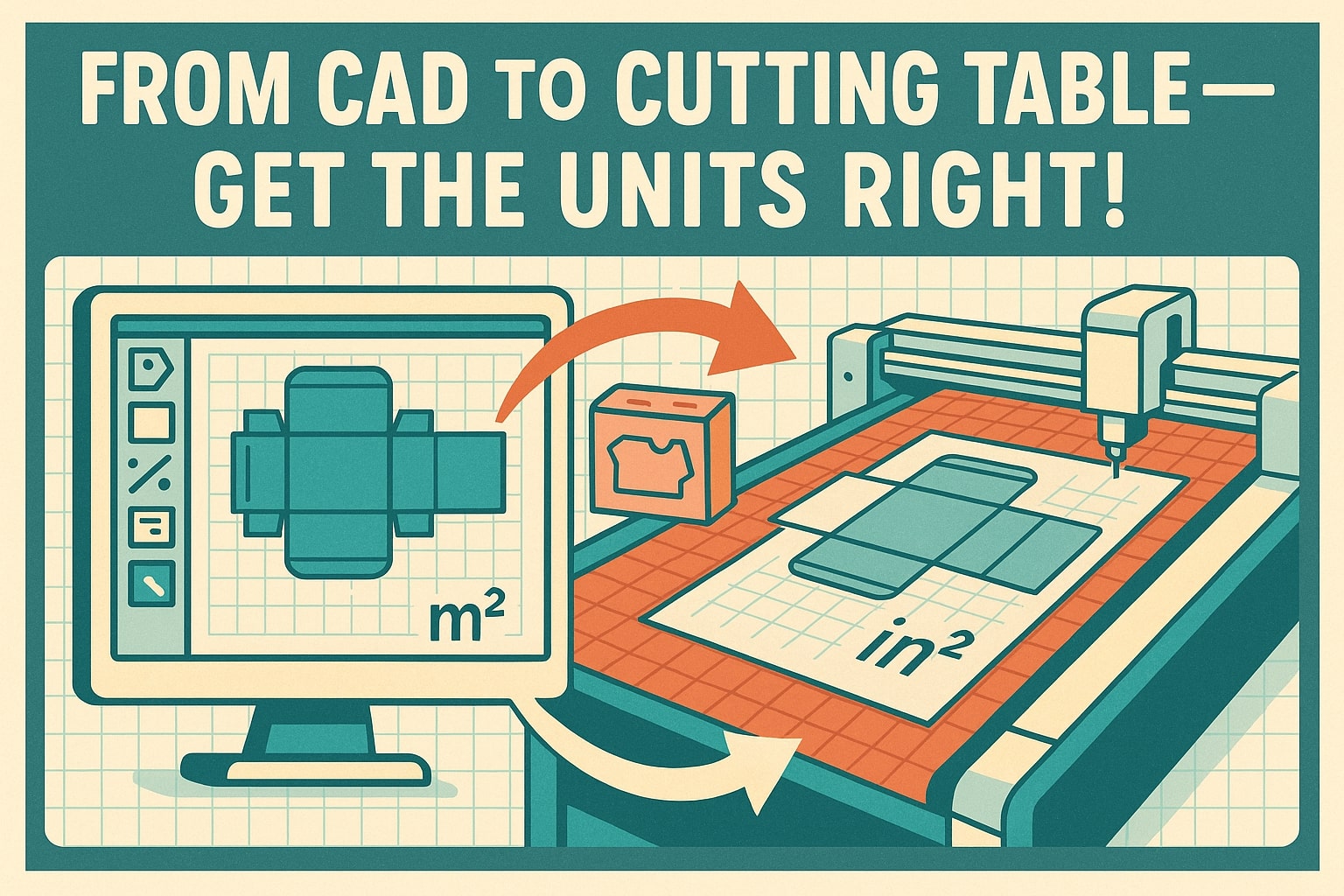square meter to square inch – How to convert m² to in²
Working with metric units in a world that still uses imperial measurements? If you're dealing with international design specs, blueprints, or product packaging, you'll likely come across both square meters and square inches. They’re units from completely different systems — but switching between them is easier than you might think.
Here’s how to go from m² to in² without breaking a sweat.

What is a square meter (m²)?
A square meter is a metric unit of area — it represents the area of a square with each side one meter long. That’s 1 meter × 1 meter. It’s the standard unit for measuring area in most of the world and is commonly used in:
-
Architecture
-
Real estate listings
-
Landscape planning
-
Construction and building materials
One square meter gives you a sense of moderate space — think of a small tabletop or a standard kitchen mat.
What is a square inch (in²)?
A square inch is an imperial unit of area. It represents the area of a square that’s one inch on each side. It’s used heavily in the United States, Canada, and sometimes the UK, especially in product design, screen dimensions, manufacturing tolerances, and packaging.
You’ll find square inches everywhere from smartphone screen sizes to the surface area of printed labels or machine parts.
How to convert square meters to square inches
To convert m² to in², you need to know how many square inches fit inside one square meter. Here's the conversion factor:
1 square meter = 1,550.0031 square inches
Formula:
square inch = square meter × 1,550.0031
This gives you a precise conversion from metric to imperial.
Example: turning square meters into square inches
Let’s say you’re designing a graphic for a product label, and your workspace is 0.75 m². To convert that to square inches:
square inch = 0.75 × 1,550.0031
square inch = 1,162.5023
So, 0.75 m² is equal to about 1,162.5 in² — a typical surface area for something like a large poster or printed panel.
To skip the math and get fast results, use our Area Converter or check out other calculators from our Conversion tools.
Did you know?
-
Square inches are standard in TV and monitor sizing — even though screens are measured diagonally, their surface area is often evaluated in in².
-
In the printing industry, label dimensions are routinely calculated in square inches, especially for consumer packaging.
-
A U.S. letter-sized page (8.5 × 11 in) covers 93.5 in² — which is roughly 0.06 m².
-
Small parts in machining and aerospace often have tolerances measured in square inches to ensure exact fit and performance.
-
Vinyl flooring and tile specs sold in the U.S. often describe coverage per box in both square feet and square inches — helpful when cutting from metric plans.
From CAD to Cutting Table – Where these units collide
In today’s design world, it’s not unusual to see square meters and square inches on the same project. Let’s say a European design agency creates packaging specs in square meters, but the production facility is in the U.S. where all the cutting dies and printing presses operate in inches. You’ll need to convert to avoid scaling errors or expensive reprints.
This also happens in CAD (Computer-Aided Design) workflows. Engineers working on international teams might draft components in metric units but export them into manufacturing environments that run exclusively in inches. Even small misalignments in area — especially on curved surfaces or high-tolerance parts — can cause huge headaches.
It’s not just about unit preferences. In some fields like aerospace or automotive, compliance regulations dictate which unit system must be used for final inspections. That makes accurate conversions not only helpful but necessary.

Every square counts
The conversion is simple but powerful:
square inch = square meter × 1,550.0031
Whether you're measuring product surfaces, signage, printed materials, or machine parts, moving between square meters and square inches keeps global teams aligned. And when one wrong unit could mean thousands in manufacturing delays, this conversion is worth getting right.
Use our Area Converter to run your numbers instantly, or head to our full suite of Conversion tools for more cross-unit calculations.

